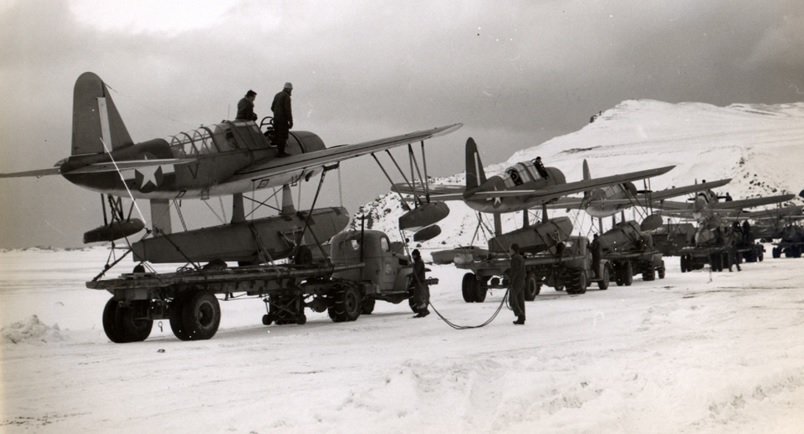http://www.wardrawings.be/WW2/Files...ine-Spitfire/Supermarine-FloatSpitfireMk9.htm
Spitfire Floatplanes (types 355 and 359)[edit]
 https://en.wikipedia.org/wiki/Supermarine_Spitfire_(late_Merlin-powered_variants)
https://en.wikipedia.org/wiki/Supermarine_Spitfire_(late_Merlin-powered_variants)
The Spitfire Vb floatplane
W3760
With the German invasion of Norway in April 1940 the RAF took an interest in the concept of using
floatplane fighters in areas where airfields were not immediately available. To this end a Spitfire Mk I
R6722 was taken in hand at the
Woolston factory to be modified and mounted on
Blackburn Roc floats. Tank tests were carried out at
Farnborough, using a 1/7 scale model, it was found that the concept was basically sound, although the vertical tail surfaces would need to be enlarged to counterbalance the side area of the floats. The end of the Battle of Norway and the need for as many Spitfires as possible meant that
R6772 was converted back to an ordinary fighter without being flown.
[52][53]
With the entry of Japan into the war the concept was revived in early 1942. A Spitfire V
W3760 was fitted with a pair of floats 25 ft 7 in (7.8 m) long, mounted on cantilever legs. This aircraft was powered by a Merlin 45 driving a four-bladed propeller of 11 ft 3 in (3.43 m) diameter (3.4 m). A Vokes filter was fitted to the carburettor air intake and under the tail an extra fin extension was added. Other changes included external lifting points forward of and behind the cockpit and a spin-recovery parachute with a rudder balance-horn guard. The Spitfire floatplane was first flown on 12 October 1942 by Jeffrey Quill. Soon afterwards the Vokes filter was replaced by an Aero-Vee filter, similar to that on later Merlin 61 series aircraft, which was extended to prevent water entry, and full Mk VB armament was installed. Two more VBs
EP751 and
EP754 were converted by
Folland and all three floatplanes were transported to Egypt, arriving in October 1943. At the time it was thought that the floatplanes could operate from concealed bases in the
Dodecanese Islands, disrupting supply lines to German outposts in the area which relied on resupply by transport aircraft. This scheme came to naught when a large number of German troops, backed by the
Luftwaffe, took over the British held islands of
Kos and
Leros. No other role could be found for the floatplane Spitfires, which languished in Egypt, operating from the
Great Bitter Lake. Specifications for the VB based floatplane included a maximum speed of 324 mph (521 km/h) at 19,500 ft (521 km/h at 5,943 m), a maximum rate of climb of 2,450 ft/min at 15,500 ft (12.45 m/s at 4,724 m) and an estimated service ceiling of 33,400 ft (10,180 m).
[nb 7].
[54]
In the spring of 1944, with the prospect of use in the Pacific Theatre, a Spitfire IX
MJ892 was converted to a floatplane. This used the same components as the earlier Mk VB conversions. Jeffrey Quill wrote:
The Spitfire IX on floats was faster than the standard Hurricane. Its handling on the water was extremely good and its only unusual feature was a tendency to "tramp" from side to side on the floats, or to "waddle" a bit when at high speed in the plane.
Soon after testing started the idea of using floatplane fighters was dropped and
MJ982 was converted back to a landplane.
[55]
Five aircraft were converted:
- Mk I – R6722
- F Mk Vb – W3760
- Mk V – EP751 and EP754
- Mk IXb – MJ892 [56][57]




